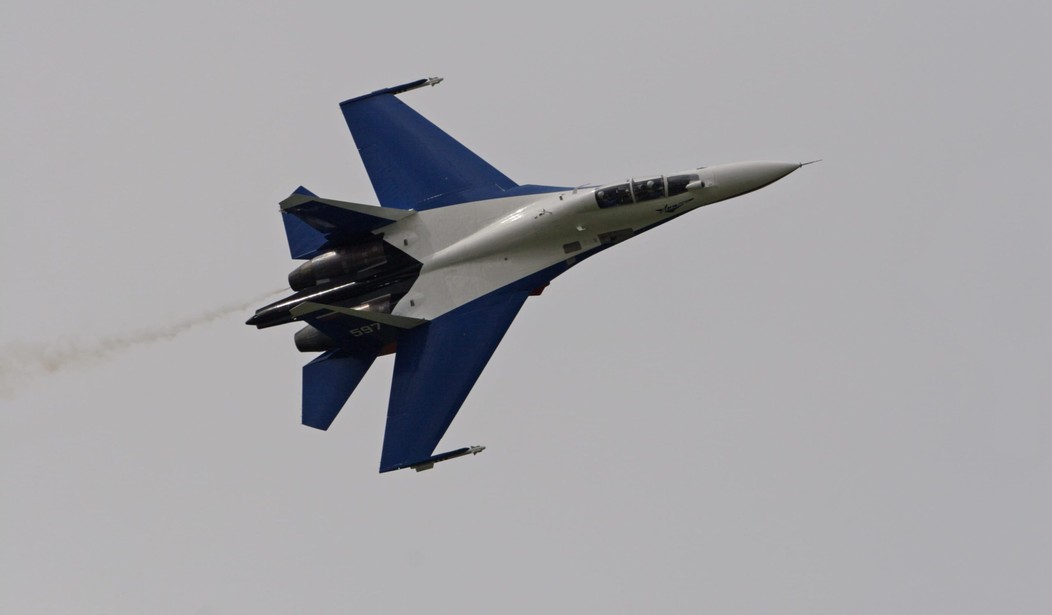It’s been easy (and fun!) to laugh at Russia’s endless troubles developing a stealth fighter to match our F-22 — which entered service over a decade ago.
But it’s less easy to laugh at their air-to-air missiles:
In air-to-air combat, the Russians have long pursued an approach of firing salvoes rather than single shots. Planes like the Su-27 Flanker may carry a dozen missiles, launching two or three at a time. The missiles have different guidance types—a mixture of infra-red and radar-guided—that makes jamming or avoiding all of them difficult, and gives a high chance of a kill. A radar-guided missile may be fired alongside another missile that homes in on radar jamming, guaranteeing a hit whether or not a jammer is used.
Russian aircraft’s missiles are sophisticated, too. The Russian Vympel R-73 dogfight missile has an “off-boresight” capability to hit targets not directly in front of the aircraft. It was introduced in 1982, and NATO planners soon noted the advantage it gave Russian pilots in a close-quarters fight compared to their equivalent, the AIM-9 Sidewinder. U.S. pilots did not gain the same off-boresight capability until the AIM-9X version of the Sidewinder more than 20 years later. Meanwhile, the Russian R-73 has enjoyed several upgrades, and missile buffs still argue about which is better.
For longer-range air combat (40 miles or more) the Russians have the Vympel R-77, another advanced piece of hardware. The latest version has an Active Phased Array Antenna that gives it “zero reaction time to unexpected evolutions of the target,” according to the designers. Called the “can’t miss missile”, the K-77M appears to be more sophisticated than the current version of the West’s equivalent, the AIM-120 AMRAAM. War Is Boring writes that, “The U.S. military doesn’t have anything like it … or adequate defenses.” The K-77M was revealed in 2013 and may already be in production.
Left unsaid is how a salvo of stealth-defeating missiles even gets launched in the right direction, when the Russian pilot has no clue there’s a couple of F-22s waiting to ambush him. Our approach is to ambush far from beyond visual range, skedaddle to a new firing position, and ambush again. With Russia’s non-stealthy planes all kinds of detectable, I’m not sure how an Su-30 pilot is going to get a fire solution before he has an AMRAAM boring in on him.
But our approach works only so long as our stealth fighters remain invisible (or nearly so) to Russia’s increasingly-sophisticated radar systems.
I’ve read that Russia has deployed, or will deploy, their most advanced S-400 antiaircraft batteries to Syria. Let’s hope the Air Force is taking detailed notes every time one of them lights up.










Join the conversation as a VIP Member